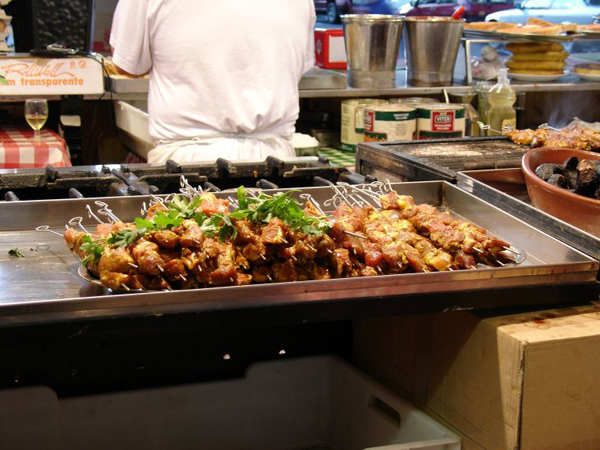
One of the biggest draws of the Canary Islands, Lanzarote is a favourite for the beach lover and those heading to the party towns along the east coast. In addition to its pleasant climate and water-oriented activities, Lanzarote has cultural traditions that don’t receive as much attention as they deserve, particularly in terms of local foods. The farmers who still work the alien volcanic landscape here produce some tasty results worth investigating. If you’re keen to visit the island, look up lanzarote holidays with Thomson to get an idea for the going rate.
Eating out in Lanzarote could consist of any national food you care to name. The resorts are catered for in terms of their visitors; from countries such as China, Japan, Italy, France and of course, Britain.
However, a willingness to try the local cuisine will be rewarded with delicious fresh fish dishes, casseroles using island-grown veg and local goat and sheep’s milk cheeses.
One of the key Canarian foods to sample is papas arrugadas or ‘wrinkly potatoes’, cooked in sea water and covered with a garlic or paprika sauce known as mojo. Vegetables produced here are grown in volcanic gravel fields and they make for tasty stews like puchero and potaje, using pulses like chickpeas and lentils as well as meat.
Fish fresh from the sea is always a treat in Lanzarote, with the most common varieties being sea bream, parrot fish and sea bass which are often grilled and served with a green mojo sauce. Thicker fish stews are made with gofio, a local flour made from corn and maize plants.
Notable eateries include the unique El Diablo restaurant overlooking the Timanfaya National Park. Using a built-in vent, the chefs here cook meats and grill potatoes over the volcanic heat from beneath the ground. Elsewhere, the restaurant at the Cezar Manrique-designed Museo Al Campesino serves traditional omelettes and pickled fish salpicon in the amazing setting of a Jameo, a black lava cave.
If you want a glimpse of age-old farming techniques as well as the lifestyle of the artisans of Lanzarote, try a visit to the Museo Agricola El Patio in Teguise. See a windmill, wine cellar and a working farm here; cereal and vegetable crops are still produced and camels and goats still bred according to traditional techniques. The preserved interior from a 19th century farmhouse is also fascinating.
You can sample authentic flavours in any of the towns and villages where small tapas bars and ‘teleclubs’ serve the locals with home-grown wines and very reasonable dishes. This can be a great way of escaping the touristy places and getting a taste of true Canarian life at the same time. In any case, the quality of the food grown and cooked in Lanzarote is certainly ripe for more recognition.


Truly, the method identified as drip irrigation package is a blend of a amount of shipping and delivery programs on the lower-quantity and lower-strain groups. The complex term is micro-irrigation. The method sprung from the increasing need to have to conserve water.